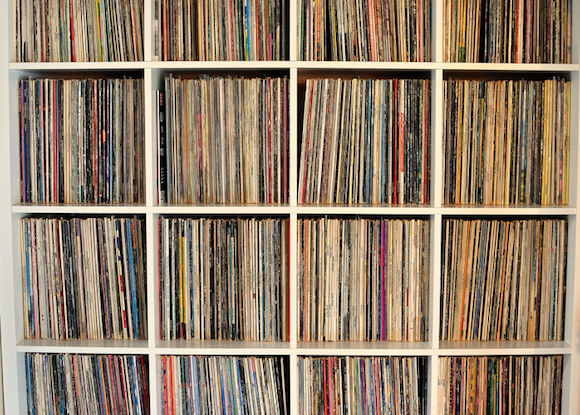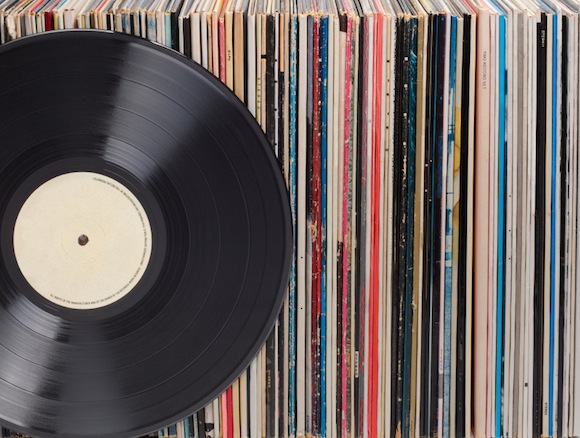Streaming music may hog the spotlight, but for many music aficionados vinyl records remain the format of choice.
So much so in fact, sales of LPs totaled 27.5 million units in 2020, continuing a 15-year streak of increasing sales. Collecting vinyl has become so popular, that last year’s sales of records surpassed that of CDs for the first time since the 1980s.
Everybody who buys records knows you buy a couple, and soon you buy a couple more. Before you know it your sagging shelving is overflowing with vintage vinyl. Records take up a lot of space and fast. Records are also delicate, prone to warping and scratching if stored and handled poorly.
Most record collectors proudly display their vinyl collection and a turntable in a prominent place in their home. Records are meant to be enjoyed after all.
But what happens when you have to move houses? Or if your vinyl collection grows so large it takes over your home?
Here’s the deal: Storing vinyl records the wrong way could seriously affect their value and playability. But properly stored vinyl records will last for generations.
Best Vinyl Record Storage
If you must store your albums in a self-storage unit, be sure to use a climate-controlled self-storage unit. Extreme swings in temperature will damage records. Moisture and humidity can damage album covers and vinyl as well. Stored in a standard outdoor storage unit during a hot summer, records could warp or melt.
Optimal climate control is necessary for long-term storage of your vinyl records. Climate-controlled storage units have the inside temperature and humidity regulated to stay within a predictable range. That means your entire collection will be better protected from the threats of mold, mildew, and extreme heat. Fail to keep records in a climate-controlled storage unit and you will likely end up with piles of unplayable pieces of expensive plastic.
Whether in storage or in your home, vinyl should be kept under the following conditions:
- Room temperature between 59 and 77 degrees Fahrenheit.
- Avoid direct sunlight
- Ideal humidity level is between 35% and 45%
Handle Your Records with Care
The Library of Congress has one of the largest vinyl record collections in the world. It recommends that you not only wash and thoroughly dry your hands before packing and storing your collection, but make sure when handling vinyl records that you touch only the edges and the label areas.
It might be a smart idea to clean any dirty records, and those with pops and scratches before putting into storage:
- Gently wipe the surface with an anti-static record cleaning brush to remove and dirt and dust.
- Apply a small amount of vinyl cleaning solution and wipe in a circular motion with a microfiber cloth
- Rinse with water and dry completely with a new microfiber cloth
Use caution when cleaning records to make sure the record labels or nearby album covers don’t get wet at all. If you have a lot of records to clean, consider using a Spin Clean record washing system or similar device. Be absolutely sure records are completely dry before putting back inside their album covers and storing them away.
Keep Vinyl Records Vertical
“If you’re putting records away in storage for months or years on end, you definitely want to store them vertically and never lay them on top of each other,” said Jon Meyers, publisher and founder of The Vinyl District.
Ideally in your home on display, your records should be kept in a storage cabinet designed for storing records. The Kallax shelving unit from IKEA is one example that works extremely well for storing a good-sized collection inside a home. Vinyl records that are allowed to lay flat will warp over time. Using a record cabinet or stand insures that they are stored in the correct position.
Using record dividers can also help keep your collection organized and minimize unnecessary handling. Never store 10″ records next to 12″ records without a divider. Doing so can cause warps and wobbles to form, especially when they are tightly packed.
Choose the Right Vinyl Record Box
Since you’re going to be keeping your vinyl records vertical, you need the right kind of container to hold them. Look for record cases or crates that can hold your collection. Wine crates can work for vinyl albums if you’re in a pinch. Small cardboard boxes for moving are perfectly sized for storing vinyl as well.
Since record collecting is so popular among hobbyists, a number of storage products are available just for this purpose. If you have records of different sizes, say 12-inch and 7-inch (think 45s), keep them separate in storage boxes designed for that size.
Need to store your vinyl records? These are the best storage options for storing albums.
Best Cardboard Storage Boxes for Vinyl Records
When it comes to storing records in cardboard boxes, you have two good choices.
- Small moving boxes. A standard small moving box, like the one you would buy at U-Haul, is perfectly-sized for holding LPs. You can put anywhere from 80 to 100 albums in one standard small moving box.
- Lidded storage boxes for vinyl records. These storage boxes are specifically designed for record collectors, and hold about 65 12-inch records. Double walls provide extra support and protection. The lidded designed allows you to easily retrieve records while in storage.
Best Wood Crates for Vinyl Records
The classic choice for storing records is a wood crate. Not only do they look great for in-home display, but they can work for longer term storage if using appropriate shelving and outer sleeve dust protection. Victrola wood crate come in a variety of different colored finishes to choose from, these wood crates hold up to 50 records each.
Best Plastic Case for Vinyl Records
Soft plastic cases won’t provide much protection from falling objects, but they are easy to transport and organize. These plastic storage totes from Evelots hold 36 albums each and provide protection from dirt, moisture and dust.
Best Hard Case for Vinyl Records
For your most valuable vinyl, consider a hard case like the EasyGo vinyl storage case. The aluminum-bodied case provides ultimate protection against impact, dirt and other debris.
Use Record Sleeves
Sleeves give your vinyl records extra protection, keeping them free from dust and dirt. However, sleeves can become damaged over time, so if you notice that one of your sleeves has become mildew-infested or otherwise isn’t in good shape, replace it.
Outer Sleeves
Outer sleeves protect the cardboard album cover. These thick plastic sleeves primarily keep your album covers from scratches and stains. Use archival-quality acid free outer sleeves that are at least 3 milimeters thick.
Inner Sleeves
Inner sleeves protect the vinyl record itself. Traditionally paper sleeves have been used, but record buffs prefer new lightweight plastic sleeves made of polyethylene. Consider replacing the original paper sleeves with plastic sleeves, especially if they are already torn or ripped. For the best of both worlds, use a dual-layer inner sleeve that features paper on the inside and plastic on the outside.
Keep Records Cool and Dry
Store your records in a place where they’ll be kept away from the heat and direct light. In fact, a comfortable room temperature of 65 to 70 degrees would be ideal. Humidity also can harm your vinyl, so try to keep the humidity level below 50 percent. If you’re putting your vinyl records in self-storage, a climate-controlled unit will help ensure the ability to spin them for years to come.
Putting Vinyl Records in Storage
Never stack boxes of records more than three high. Doing so can put too much pressure on discs in the bottom tier. Keep them off the floor if possible as well in case of flooding. Wood shipping pallets will do the trick, or you can set up your own shelving inside the storage unit to keep your boxes on.
If you follow the advice above, your vinyl will be in top condition when the time comes to spin them on the record player once again.




